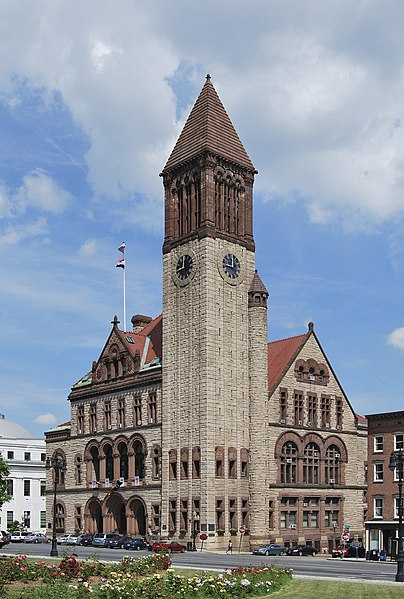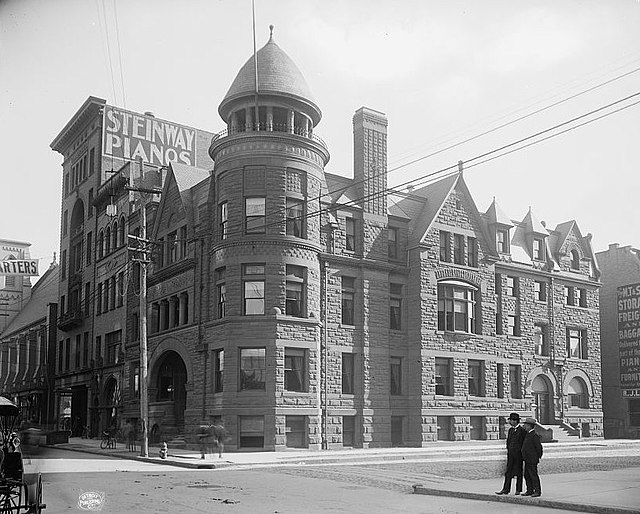Richardsonian Romanesque is a style of Romanesque Revival architecture named after the American architect Henry Hobson Richardson (1838–1886). The revival style incorporates 11th and 12th century southern French, Spanish, and Italian Romanesque characteristics. Richardson first used elements of the style in his Richardson Olmsted Complex in Buffalo, New York, designed in 1870. Multiple architects followed in this style in the late 19th century; Richardsonian Romanesque later influenced modern styles of architecture as well.
Albany City Hall in Albany, New York, designed by Richardson in 1880
The Samuel Cupples House in St. Louis, built in 1890, is an example of a Richardsonian Romanaesque-style mansion
The original building for the Toledo Club in Toledo, Ohio, 1900s
Trinity Church in Boston, designed by Richardson in 1872
Romanesque Revival architecture
Romanesque Revival is a style of building employed beginning in the mid-19th century inspired by the 11th- and 12th-century Romanesque architecture. Unlike the historic Romanesque style, Romanesque Revival buildings tended to feature more simplified arches and windows than their historic counterparts.
The Smithsonian Institution Building, an early example of American Romanesque Revival designed by James Renwick Jr. in 1855
Culzean Castle by Robert Adam, 1771
Gosford Castle, Armagh by Thomas Hopper
Penrhyn Castle, by Thomas Hopper, 1820–1837








